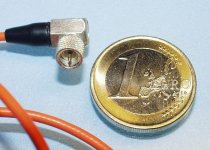the C2500L is indeed a nice camera, i should have qualified my remarks. it was quite high-end in its day. if you can get one used cheaply it is not a bad choice... definitely good optics on that one. there is no doubt that the newer models have superior sensors, image processing, and features though, and the cheaper olympus models do not look so good.
I´m not at all a digital camera expert but it seems that as mentioned here before that the optics are actually more important than the sensors, pixels amount etc.there is no doubt that the newer models have superior sensors, image processing, and features though, and the cheaper olympus models do not look so good.
The E-10 we compared against has much higher amont of pixels etc. but the increase in pic quality was only very marginally - if at all.
For those who do not know the Camedia C-2500L is a digital mirror reflex camera which is a still quite rare feature with digital cameras as I believe and which has quite some advantages over cameras without mirror reflex. Maybe not for taking pics of electronic parts but I guess most of You will use it not only for this.
well, it's not quite that the lens is more important than the other factors. more that a high-resolution sensor isn't much help when the optics are sub-par. this is why an older, high-quality 2MP camera will look better than one of the newer ultra-compact 4MP pocket cameras. the newer camera cannot take full advantage of the increased resolution because the optics are a limiting factor.
that said, the newer sensors are indeed better, and not just because of higher resolution. many of the newer cameras have larger color spaces (10 or 12 bit vs. 8 bit). the noise levels of newer CCDs are lower. signal processing algorithms are more advanced now, resulting in less loss of detail. most importantly, chromatic aberration, one of the especially objectional traits of digital photos, tends to be much better controlled in newer models. these often add up to a more accurate and natural-looking photo, optics permitting.
so yes, optics are key, but they don't completely make up for inferior sensor and other technologies. i guess you just need to balance the compromises at a given price point, between sensors on newer/cheaper models and optics on older/better ones. ideally you could have both great optics and technology, but that of course costs money. hard to say whether i would take a new Canon A300 over a used Olympus C2500... the C2500 is indeed a better "camera" but the sensor in the A300 is really very good. if the optics in the A300 are ok as bikeman suspects, i'd lean towards the A300. the C2500 is still a great camera tho, no argument from me there.
not to boast, but take a look at these samples, taken on my canon S30. though the optics are inferior to those on your C2500, the pictures are very natural looking:
http://dorkus.tzo.net/photo/flowers.jpg
http://dorkus.tzo.net/photo/pic.jpg
that said, the newer sensors are indeed better, and not just because of higher resolution. many of the newer cameras have larger color spaces (10 or 12 bit vs. 8 bit). the noise levels of newer CCDs are lower. signal processing algorithms are more advanced now, resulting in less loss of detail. most importantly, chromatic aberration, one of the especially objectional traits of digital photos, tends to be much better controlled in newer models. these often add up to a more accurate and natural-looking photo, optics permitting.
so yes, optics are key, but they don't completely make up for inferior sensor and other technologies. i guess you just need to balance the compromises at a given price point, between sensors on newer/cheaper models and optics on older/better ones. ideally you could have both great optics and technology, but that of course costs money. hard to say whether i would take a new Canon A300 over a used Olympus C2500... the C2500 is indeed a better "camera" but the sensor in the A300 is really very good. if the optics in the A300 are ok as bikeman suspects, i'd lean towards the A300. the C2500 is still a great camera tho, no argument from me there.
not to boast, but take a look at these samples, taken on my canon S30. though the optics are inferior to those on your C2500, the pictures are very natural looking:
http://dorkus.tzo.net/photo/flowers.jpg
http://dorkus.tzo.net/photo/pic.jpg
Re: Re: For close-up shots...
I would not go as far as "a large extent", it's all about the lens! Especially if we talk 5 MPx or more.planet10 said:To a large extent the quality of the cameras pictures is dictated by the lens...
Re: I'm just an old square...
This is getting into tricky territory... how are you defining resolution? This is all part of the whole "size" thing when you are dealing with raster images. Like the Eskimos have many words for snow, when you are talking about rasters, size has many meanings... one of the hardest concepts to get across when i'm doing PhotoShop training...
dave
EC8010 said:I assume everybody is aware that to double resolution you have to square the number of pixels? Thus, 8M is required if we want to double the resolution of a 2M array...
This is getting into tricky territory... how are you defining resolution? This is all part of the whole "size" thing when you are dealing with raster images. Like the Eskimos have many words for snow, when you are talking about rasters, size has many meanings... one of the hardest concepts to get across when i'm doing PhotoShop training...
dave
Re: I'm just an old square...
Few cameras have better lens than the sensor in the 4 MPx segment. What about the 11 and 13 MPx?? Really important with the lens!
Exactly, 4 vs. 5 MPx makes no difference. It's like 2.0 GHz and 2.4 GHz PC.EC8010 said:I assume everybody is aware that to double resolution you have to square the number of pixels? Thus, 8M is required if we want to double the resolution of a 2M array...
Few cameras have better lens than the sensor in the 4 MPx segment. What about the 11 and 13 MPx?? Really important with the lens!
Resolution
At the camera, defining resolution is easy. The lens produces an image on the CCD array. We scan that image with horizontal lines. The sharpest image we could resolve would be of alternate horizontal black and white lines. Any detail finer than that is lost. Thus, to double resolution, we need to double the number of lines. If we want the same resolution in vertical and horizontal directions, we need square pixels, so if we double the number of lines, we must also double the number of pixels in each line. TV cameras typically define their resolution by the number of vertical lines (the number of horizontal lines being defined by the TV standard).
The situation is slightly complicated by the fact that a CCD array samples the image. Any sampling system must be preceded by an anti-aliasing filter, which inevitably causes some loss of resolution in-band, and there is also a loss due to aperture effect. Thus, all electronic cameras also include aperture correction. These losses and subsequent corrections mean that the only fundamental indicator of resolution is the number of pixels actually sampling the image. (It is well-known that excessive aperture correction makes pictures look sharper to the untrained eye.)
The moment we manipulate the image, resolution is lost. As an example, we never merely crop an image, we generally expand the new image to the old size. Fewer optical pixels produced the new image, so its resolution falls. Even worse, the old (optical) pixels are no longer aligned with the display pixels, so we have to interpolate to determine the brightness values of the new pixels. This process further reduces resolution. And as for compression...
planet10 said:This is getting into tricky territory... how are you defining resolution?
At the camera, defining resolution is easy. The lens produces an image on the CCD array. We scan that image with horizontal lines. The sharpest image we could resolve would be of alternate horizontal black and white lines. Any detail finer than that is lost. Thus, to double resolution, we need to double the number of lines. If we want the same resolution in vertical and horizontal directions, we need square pixels, so if we double the number of lines, we must also double the number of pixels in each line. TV cameras typically define their resolution by the number of vertical lines (the number of horizontal lines being defined by the TV standard).
The situation is slightly complicated by the fact that a CCD array samples the image. Any sampling system must be preceded by an anti-aliasing filter, which inevitably causes some loss of resolution in-band, and there is also a loss due to aperture effect. Thus, all electronic cameras also include aperture correction. These losses and subsequent corrections mean that the only fundamental indicator of resolution is the number of pixels actually sampling the image. (It is well-known that excessive aperture correction makes pictures look sharper to the untrained eye.)
The moment we manipulate the image, resolution is lost. As an example, we never merely crop an image, we generally expand the new image to the old size. Fewer optical pixels produced the new image, so its resolution falls. Even worse, the old (optical) pixels are no longer aligned with the display pixels, so we have to interpolate to determine the brightness values of the new pixels. This process further reduces resolution. And as for compression...
yeah, resolution alone is not a good barometer of quality. actually, i chose my 3MP Canon S30 over a 4MB S40. i bought the S40 first but returned it and got the S30 because i felt the image quality was actually more pleasing with the lower-res version... more natural, less noise, required less touch-up.
Re: Resolution
In raster image terms this would be called doubling the dot/pixel density which indeed does go up with the square.
dave
EC8010 said:define their resolution by the number of vertical lines (the number of horizontal lines being defined by the TV standard)
In raster image terms this would be called doubling the dot/pixel density which indeed does go up with the square.
dave
- Status
- This old topic is closed. If you want to reopen this topic, contact a moderator using the "Report Post" button.
- Home
- General Interest
- Everything Else
- digital camera advice

